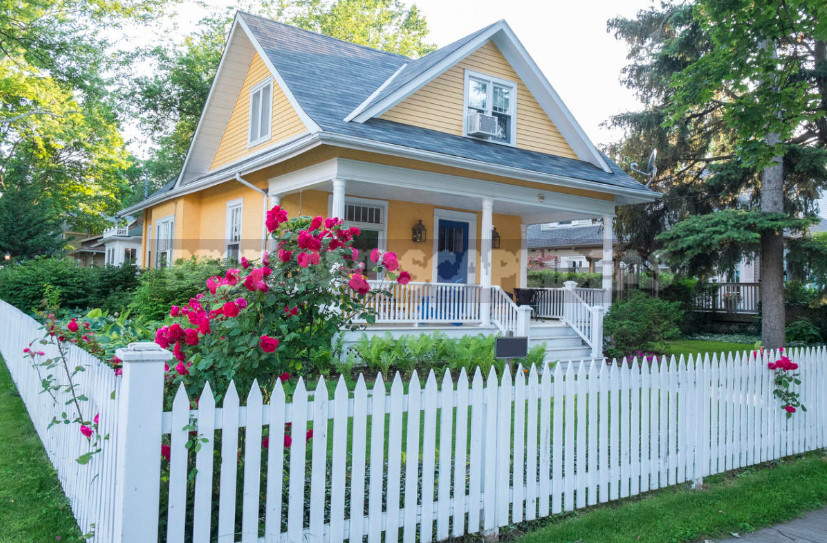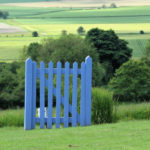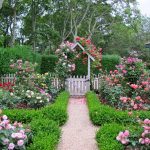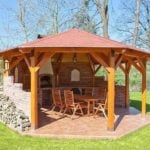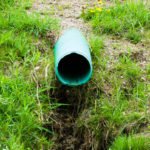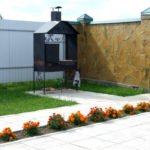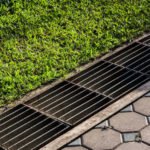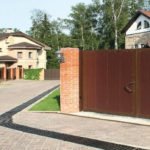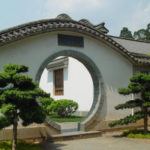Often, flipping through the projects of landscape firms and pages of glossy magazines, we say to ourselves: “Of course, there are gardens of any size, we don’t live like this on our 4 (6, 8, etc.) acres!”. And do not even try to apply something of what you have seen to such a small, but your own piece of land.
I will not convince you that a garden can be beautiful and spectacular on a small plot – this is the topic of a completely different article. I’m just going to try to tell you how to do a little more. The fence, of course, will remain in the place where it stood, but nevertheless, you will be able to visually enlarge your territory. There are several proven ways to do this.
Method one: color
Try the experiment at home. Take two tablecloths, one light yellow and the other dark blue, and cover two tables of the same size with them. You will immediately see how the same tables will change their size. Yellow will rise and expand, and blue as it shrinks, its boundaries will be clearly outlined, and it will appear smaller. So is it worth narrowing your garden by covering it with a dark carpet? Maybe it’s better to “cover a small area with a yellow tablecloth”?
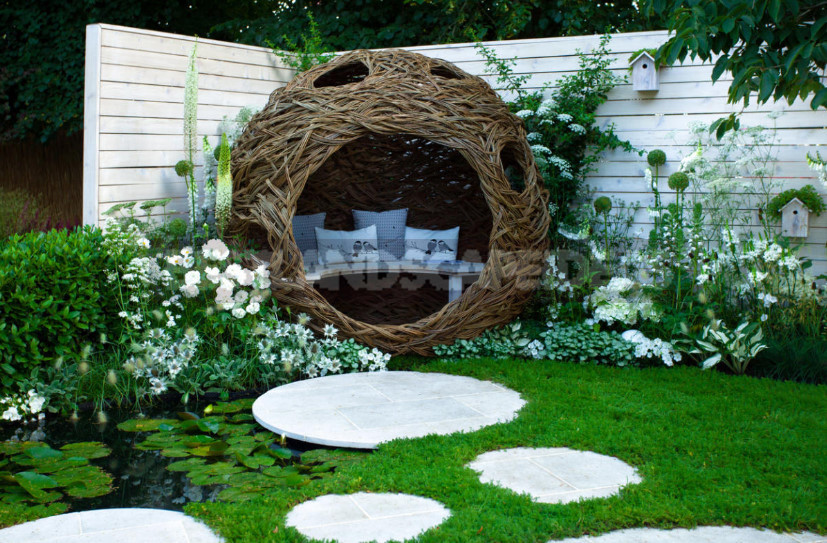
In principle, the above applies not only to blue and yellow, but in general to all light and all dark colors. We often hear from women that “white makes you fat, black makes you slim.” In fact, the dark one is not thin, but shows the real size, emphasizing the borders, and the light one blurs the border, as it were. This phenomenon is called irradiation. That’s why a table with a yellow tablecloth (as well as a field under snow, light paving stones in the garden) seems larger than a table under a blue canvas (a plowed field, dark paving stones).
The same principle is used when landing. In Soviet times, for example, it was often possible to see, say, lilac varieties planted in pairs on the alley. The alley began with light (pure white, pale pink, light blue), then passed through medium (pink, purple) and ended with dark (burgundy, rich purple) pairs of varieties. When a person got into the alley from the light side and looked in the dark side, the length of the alley seemed to him less than it actually is. It was only necessary to move to the opposite side, as the same alley increased in size.
It is clear that a lilac alley is hardly possible in a small garden, but the essence is important. In classical design, this phenomenon is called aerial perspective. Using his laws, we could achieve a similar effect.
The effect of not only light and dark colors, but also cold and warm ones is interesting. Warm colors (red, orange) always seem closer than they really are, and cold colors (blue, light blue) are farther away. And if, for example, purple barberry and blue spruce grow on the same line near the fence, the spruce will seem a little further away than it really is, and the barberry is closer.
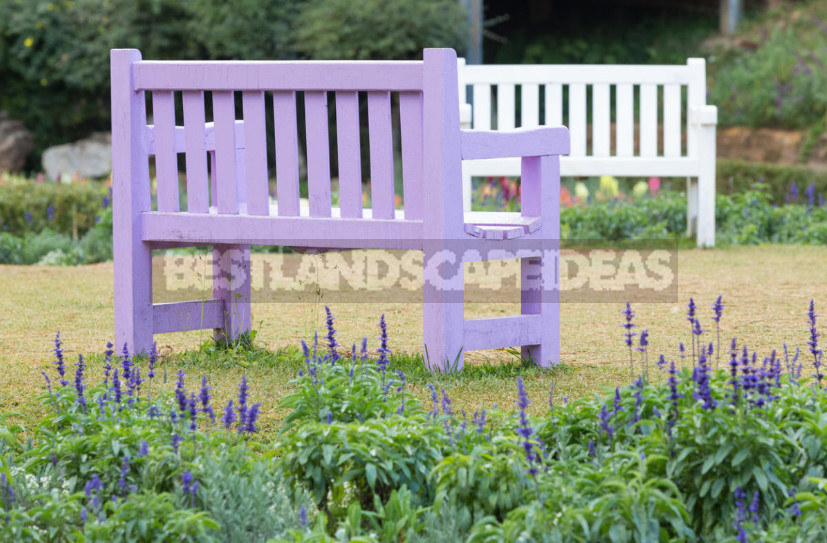
And it doesn’t have to be plants. It can be buildings, and the color of the fence, and so on. So, if you enter the gate and, standing between two red barberries near it, admire the house painted blue, the house will seem further away than it really is. If there is a blue fir tree near the gate, and the house itself is made of red brick, then the distance between it and the gate will seem smaller. What is not an artificial change in the size of the site?
Method two: perspective
We have already touched on the aerial perspective above, but there is also the concept of a linear perspective. Without going into theory, let’s try to explain this with concrete examples.
The phenomenon of perspective is clearly visible on the road going into the distance. Both its right and left sides converge on the horizon at one point. In fact, these are two parallel lines that never intersect, but it seems to us that they converged at one point.
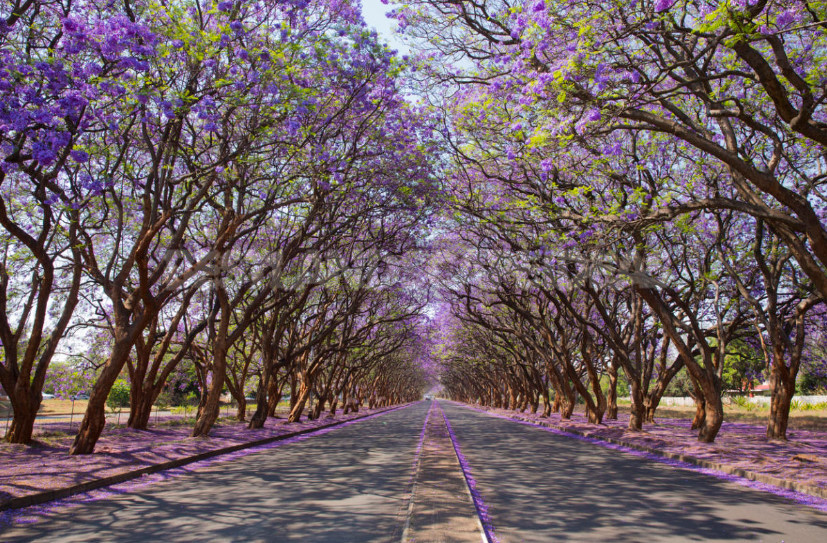
It turns out that if you intentionally start to shorten these two lines (that is, as you move away, the track will be a little narrower), then we will artificially strengthen this perspective, and the track will eventually seem longer than it actually is. However, if you stand on the opposite end of it, it will seem shorter than it actually is. Such a focus can be performed both with a channel and with a linear flower garden.
But everything described is like a planar change in perspective. And it can be a spatial perspective. When we look deep into the alley, the trees seem smaller and smaller in height as we move away, although in fact they are the same. So if you make them really shrink, you can artificially increase the perspective and the track will seem longer.
This can be done not only with plants in the alley, but, for example, with lanterns, gradually reducing their height. It may be interesting to intentionally change the height of a trimmed hedge and fence, in which each subsequent column is slightly lower than the previous one. So, if you look at the corner of the plot, and in fact the pole holding your fence in this corner is the smallest, and the others, moving away from it, gradually increase, then this angle will seem much further away than it actually is.
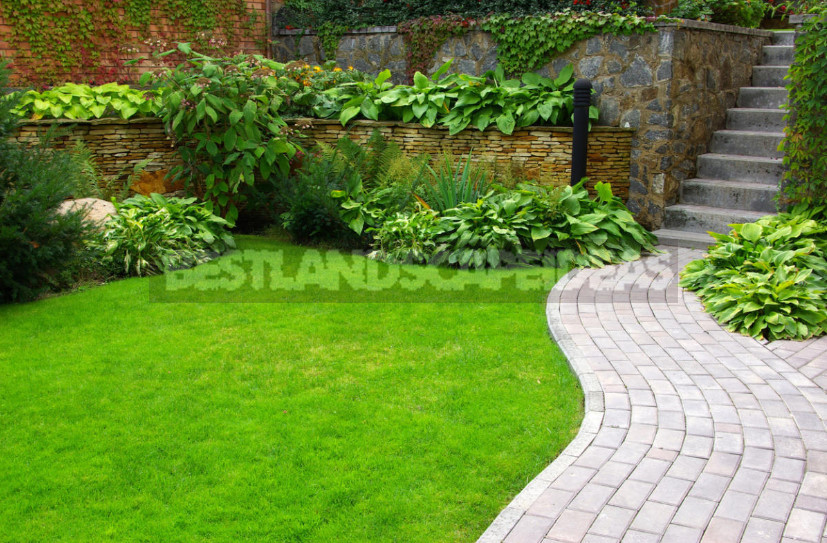
The use of plants with different wreath sizes works similarly. If plants with very large foliage are placed closer to the view point, then plants with medium leaves are placed, and then with small leaves, the linear perspective will artificially increase. If you do the opposite, you will decrease.
This phenomenon was used by the ancient Japanese in the construction of their gardens. They also narrowed the route as they moved away from the observer, as we discussed above. As a result, their small gardens seemed a little bigger.
Method three: reflections
Remember yourself in the gym, where one of the walls is mirrored. The space seems huge, although by all the rules it should have grown only 2 times. Mirrors, of course, push the space very much.
In the garden, in imitation of such a large mirror, there would be a pond. Regardless of whether it reflects the sky or bright coastal plants, it significantly expands the space of the garden, actually adding to it everything that is reflected in it.
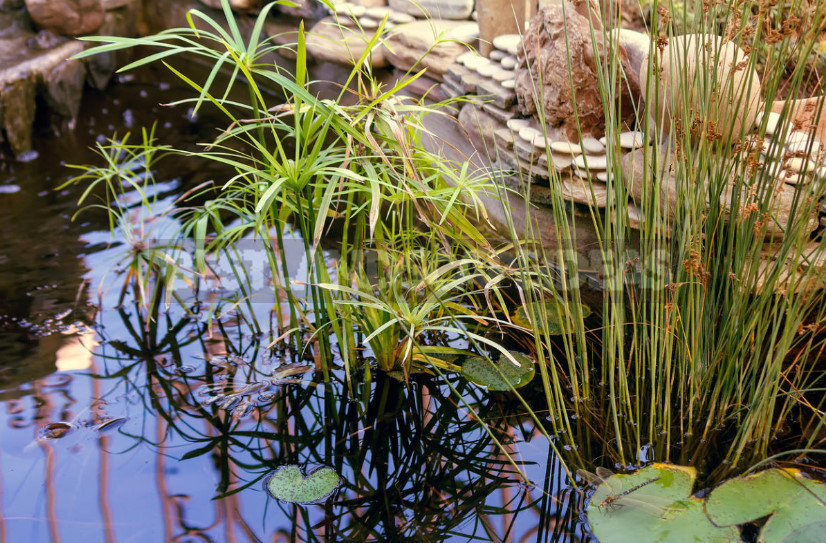
In this regard, it is worth recalling that shady ponds reflect better than illuminated ones, deep ones reflect better than small ones. If your pond is shallow and not shaded, it can become a “mirror” of better quality if its bottom is dark.
Do not neglect the actual mirrors , which can not only expand the space of the garden, but also give it a certain mystery. Now they are not so rarely used, especially since there are precipitation-resistant plastic options. But still it should be remembered that in the vast majority of cases mirrors in the garden are good when we do not suspect that it is a mirror, regardless of what options and styles are used.
